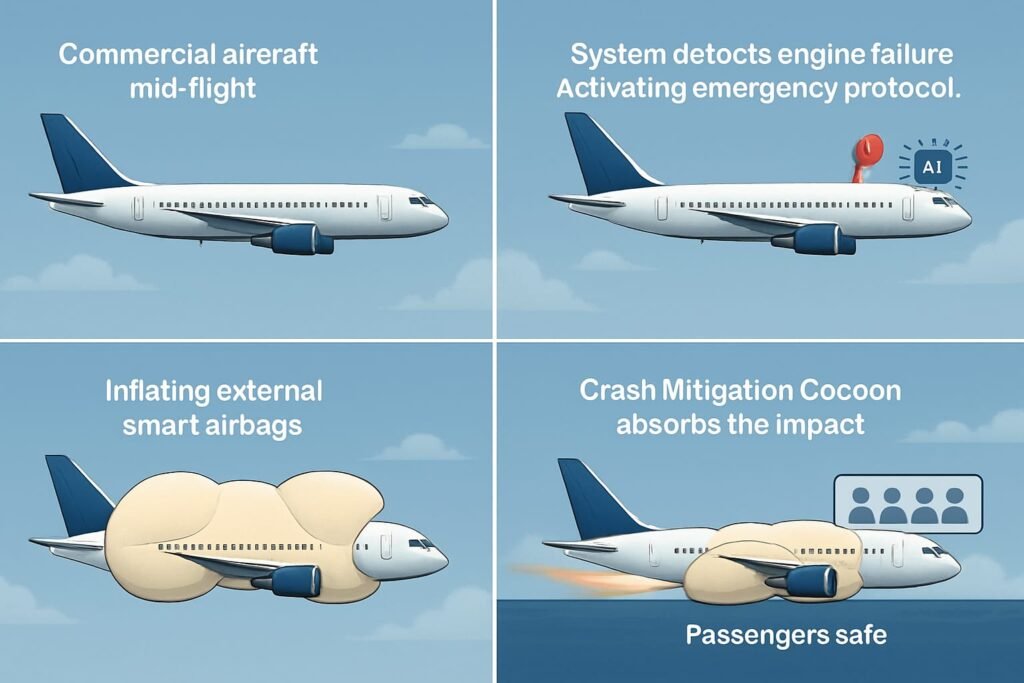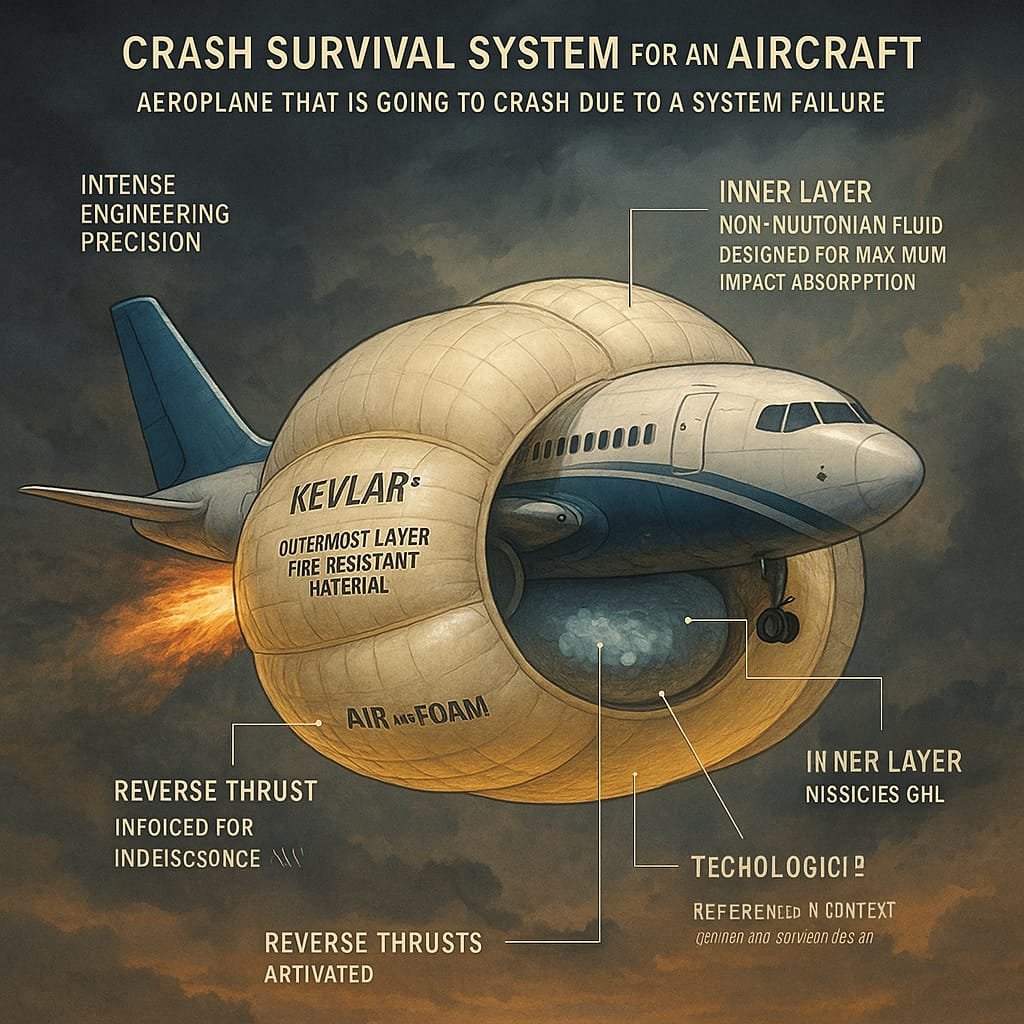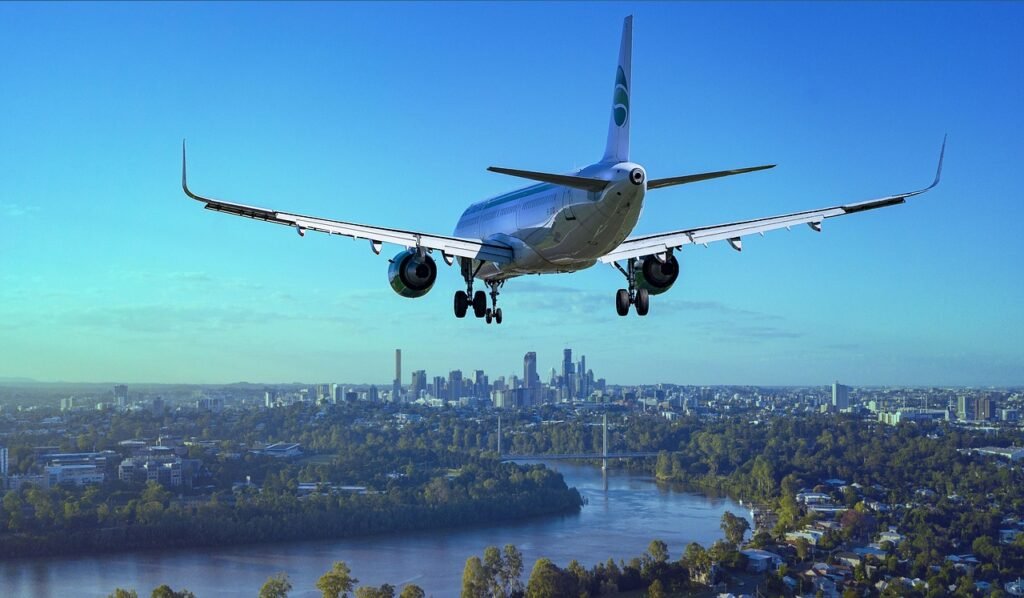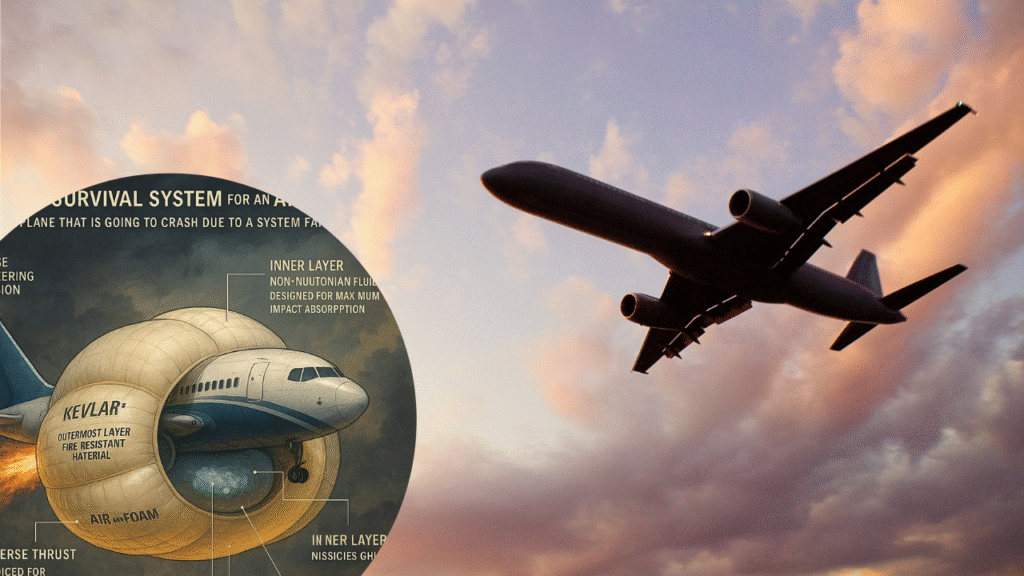It’s every traveler’s worst nightmare: a flight takes off, something goes terribly wrong, and suddenly you’re hurtling toward disaster with precious little time to react. That fear moved two engineers in India to propose something bold: what if, just before a crash, an airplane could wrap itself in airbags? Not just the tiny ones in your car, but giant, Kevlar-reinforced external airbags deployed exactly when disaster becomes unavoidable. The idea is part of Project REBIRTH, an ambitious crash-survival system that aims to transform how we think about airplane safety—not just preventing crashes but surviving them when they’re unavoidable.
Meet Project REBIRTH: What It Does, and How It Works

Engineers Eshel Wasim and Dharsan Srinivasan at the Birla Institute of Technology and Science, India, have drafted a system they call REBIRTH that combines sensors, AI, airbags, reverse thrust, and emergency markers. The core purpose: to slow impact, absorb crash forces, and speed up emergency response.
Here’s the step-by-step of what their design would do
Continuous monitoring: A network of sensors across the aircraft track altitude, speed, engine performance, direction, and pilot inputs. These feed into an onboard AI system.
Decision point below 3,000 feet: If the AI determines a crash is unavoidable under this altitude threshold, it triggers the protective measures. Pilots still have a brief window to override the deployment.
Deployment in under 2 seconds: Massive airbags would inflate around the nose, belly, and tail of the aircraft. These airbags are multi-layered (Kevlar, TPU, Zylon, shear thickening fluids, etc.) designed to absorb energy. Simultaneously, if the engines are operational, reverse thrust activates to reduce speed by 8–20%.
After impact beacons: Once the airbags and other protections are in place and contact is made, the system deploys emergency lighting, flashing lights, infrared beacons, and GPS coordinates to help rescue teams locate the plane quickly.
Simulations suggest REBIRTH could reduce crash forces by over 60 percent compared to an unprotected outcome.
They’ve also built a scale prototype (1:12) and are engaging with aircraft manufacturers and regulatory bodies to explore real-world testing.
Why This Is More Than Just Invention: The Human Impetus
REBIRTH stems more from grief and urgency than from idle innovation. Wasim and Srinivasan were personally affected by the horrifying Air India crash (an Ahmedabad-to-London flight) in which fuel control systems were reportedly turned off just after takeoff, resulting in total engine shut-down and almost no survivors.
They noticed that while aviation safety systems are excellent at preventing crashes, far fewer systems focus on how to survive one when it’s inevitable. Their goals are clear: slow down the impact, absorb energy, and make rescue easier. The emotional motivation is potent: “It’s a response to grief … a promise that survival can be planned, and that even after failure, there can be a second chance,” they write.
The Challenges: Why It’s a Big Leap, Not a Simple Fix

Innovative though it is, Project REBIRTH faces substantial hurdles before it could become standard. Experts see both technical and practical objections:
Weight and drag: Adding massive airbags, structures to support them, sensors, and the AI system will increase weight. For large commercial aircraft (which can weigh hundreds of thousands of pounds), even small increases in weight can reduce performance, increase fuel burn, or reduce payload. There are also aerodynamic consequences.
Scale of airbags: To meaningfully reduce impact, the airbags need to be enormous to cover critical parts of an aircraft. That’s a big challenge in packaging, deployment mechanics, and durability.
Reliability and false positives: The AI must decide under extreme stress in real time whether a crash is unavoidable. Getting that decision right—without triggering deployment unnecessarily—is critical. There are variables (terrain, speed variations, pilot actions) that make real-world judgment harder than in simulation.
Regulatory, certification, and cost issues: Retrofitting older aircraft, standardizing on new safety equipment, getting certification from aviation authorities, and covering costs (both manufacturing and long-term maintenance) are all big undertakings.
An aviation expert quoted in the article, Jeff Edwards (founder of AVSafe), emphasizes that while the concept is promising, the trade-offs are serious: “The weight penalty alone would be a major concern.”
Other Crazy (and Less Crazy) Ideas & Where REBIRTH Fits In
REBIRTH is far from the only bold or outlandish idea people have floated to make air travel safer or more survivable. The world of aviation safety keeps generating concepts that stretch imagination:
“Whole airplane” parachutes for small planes: Some aircraft already have parachute systems that can help slow descent when engines fail.
“Magic skin” that self-heals, protects from lightning, temperature extremes, electrical problems – sort of wrapping the aircraft in an intelligent, protective skin.
More bizarre proposals: things like trapdoors at cockpit entrance (patented by Airbus), or methods to deploy tranquilizing gas in certain emergencies. Many of these never leave the drawing board.
In this spectrum, REBIRTH sits somewhere between plausible future tech (with physical prototypes, simulation evidence, regulatory interest) and something that still needs a lot of real-world proving.
Can Project REBIRTH Bring Us a Real Second Chance?

The promise of Project REBIRTH is immense: in crashes that currently mean near-certain disaster, this system suggests a way to survive. But right now, it remains a vision, backed by simulation data and small-scale prototypes—not yet by real crash tests or widespread adoption.
If it succeeds, however, it could change not just the design of aircraft but our entire approach to aviation safety: recognizing that prevention is vital, yes, but survivability must also be built in. The cost will be high, the engineering challenges steep, and the regulators cautious. Yet if just one disaster’s toll could be drastically reduced, the effort might well be worth it.

Hi, I’m Andrew, and I come from India. Experienced content specialist with a passion for writing. My forte includes health and wellness, Travel, Animals, and Nature. A nature nomad, I am obsessed with mountains and love high-altitude trekking. I have been on several Himalayan treks in India including the Everest Base Camp in Nepal, a profound experience.




